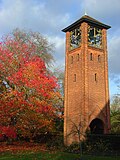
Remembrance Day is a memorial day observed in Commonwealth member states since the end of the First World War in 1919 to honour armed forces members who have died in the line of duty. The day is also marked by war remembrances in several other non-Commonwealth countries. In most countries, Remembrance Day is observed on 11 November to recall the end of First World War hostilities. Hostilities formally ended "at the 11th hour of the 11th day of the 11th month" of 1918, in accordance with the armistice signed by representatives of Germany and the Entente between 5:12 and 5:20 that morning. The First World War officially ended with the signing of the Treaty of Versailles on 28 June 1919.

The Tower Hill Memorial is a pair of Commonwealth War Graves Commission memorials in Trinity Square Gardens, on Tower Hill in London, England. The memorials, one for the First World War and one for the Second, commemorate civilian, merchant seafarers and fishermen who were killed as a result of enemy action and have no known grave. The first, the Mercantile Marine War Memorial, was designed by Sir Edwin Lutyens and unveiled in 1928; the second, the Merchant Seamen's Memorial, was designed by Sir Edward Maufe and unveiled in 1955. A third memorial, commemorating merchant seamen who were killed in the 1982 Falklands War, was added to the site in 2005.

Montgomery is a town and community in Powys, Wales. It is the traditional county town of the historic county of Montgomeryshire to which it gives its name and is within the Welsh Marches border area. The town centre lies about 1 mile (1.6 km) west of the England–Wales border. Montgomery Castle was started in 1223 and its parish church in 1227. Other locations in the town include The Old Bell Museum, the Offa's Dyke Path, the Robber's Grave and the town wall. The large Iron Age hill fort of Ffridd Faldwyn is sited northwest of the town and west of the Castle.

The PDSA Dickin Medal was instituted in 1943 in the United Kingdom by Maria Dickin to honour the work of animals in World War II. It is a bronze medallion, bearing the words "For Gallantry" and "We Also Serve" within a laurel wreath, carried on a ribbon of striped green, dark brown, and pale blue. It is awarded to animals that have displayed "conspicuous gallantry or devotion to duty while serving or associated with any branch of the Armed Forces or Civil Defence Units". The award is commonly referred to as "the animals' Victoria Cross".

Kings Park, is a 399.9-hectare (988-acre) park overlooking Perth Water and the central business district of Perth, Western Australia.

The Maiwand Lion is a sculpture and war memorial in the Forbury Gardens, a public park in the town of Reading, in the English county of Berkshire. The statue was named after the Battle of Maiwand and was unveiled in December 1886 to commemorate the deaths of 329 men from the 66th (Berkshire) Regiment of Foot during the campaign in the Second Anglo-Afghan War in Afghanistan between 1878 and 1880. It is sometimes known locally as the Forbury Lion.
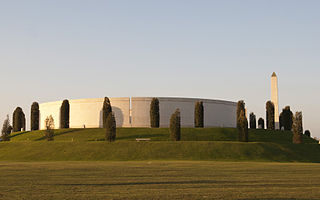
The Armed Forces Memorial is a national memorial in the United Kingdom, dedicated to the 16,000 servicemen and women of the British Armed Forces killed on duty or through terrorist action since after the Second World War. It is within the National Memorial Arboretum in Staffordshire.

Canadian war memorials are buildings, monuments, and statues that commemorate the armed actions in the territory encompassing modern Canada, the role of the Canadian military in conflicts and peacekeeping operations, and Canadians who died or were injured in a war. Much of this military history of Canada is commemorated today with memorials across the country and around the world. Canadian memorials commemorate the sacrifices made as early as the Seven Years' War to the modern day War on Terror. As Newfoundland was a British Dominion until joining Confederation in 1949, there are several monuments in Newfoundland and Labrador and abroad which were dedicated to Newfoundland servicemen and women.

Lieutenant Colonel Rupert Stuart Michael Thorneloe, MBE was a British Army officer who was killed in action on 1 July 2009 near Lashkar Gah, Helmand Province in southern Afghanistan. Thorneloe is the highest-ranking British Army officer to have been killed in action since Lieutenant Colonel H. Jones's death in 1982 during the Falklands War.
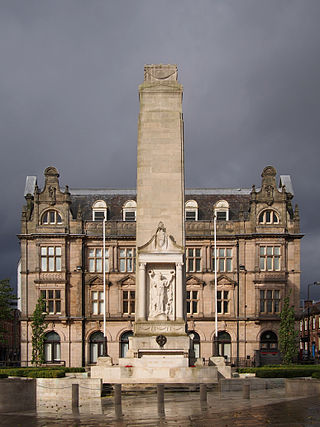
The Preston Cenotaph stands in Market Square, Preston, Lancashire, England, and is a monument to soldiers from Preston who perished in World War I and II. Unveiled on 13 June 1926, the memorial was designed by Sir Giles Gilbert Scott with sculptural work by Henry Alfred Pegram.

Goomeri War Memorial Clock is a heritage-listed memorial at Burnett Highway, Goomeri, Gympie Region, Queensland, Australia. It was built in 1940. It was added to the Queensland Heritage Register on 21 October 1992.
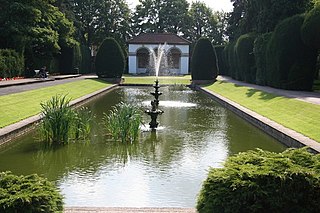
Spalding War Memorial is a First World War memorial in the gardens of Ayscoughfee Hall in Spalding, Lincolnshire, in eastern England. It was designed by the architect Sir Edwin Lutyens. The proposal for a memorial to Spalding's war dead originated in January 1918 with Barbara McLaren, whose husband and the town's Member of Parliament, Francis McLaren, was killed in a flying accident during the war. She engaged Lutyens via a family connection and the architect produced a plan for a grand memorial cloister surrounding a circular pond, in the middle of which would be a cross. The memorial was to be built in the formal gardens of Ayscoughfee Hall, which was owned by the local district council. When McLaren approached the council with her proposal, it generated considerable debate within the community and several alternative schemes were suggested. After a public meeting and a vote in 1919, a reduced-scale version of McLaren's proposal emerged as the preferred option, in conjunction with a clock on the town's corn exchange building.

Herbert James Maryon was an English sculptor, conservator, goldsmith, archaeologist and authority on ancient metalwork. Maryon practiced and taught sculpture until retiring in 1939, then worked as a conservator with the British Museum from 1944 to 1961. He is best known for his work on the Sutton Hoo ship-burial, which led to his appointment as an Officer of the Order of the British Empire.

The African and Caribbean War Memorial in Brixton, London, is the United Kingdom's national memorial to African and Caribbean service personnel who fought in the First and Second World Wars. It originated with a project for a memorial to Caribbean Royal Air Force veterans of World War II who arrived in Britain in 1948 on the MV Empire Windrush; this was an extension of the commemorative plaque and sculpture scheme run by the Nubian Jak Community Trust to highlight the historic contributions of Black and minority ethnic people in Britain. The memorial was originally to have been placed at Tilbury Docks, as part of the commemoration for the centenary of the outbreak of World War I. However, as the project began to evolve into a larger tribute that included both World Wars and commemorated servicemen and women from both Africa and the Caribbean, it was agreed by the memorial recipient – the Port of Tilbury – and the project organisers that a new, more accessible location needed to found. The memorial was ultimately permanently installed and unveiled on 22 June 2017 in Windrush Square, Brixton.
The works of Herbert Maryon (1874–1965) were made in a variety of mediums. They were intended to be decorative, functional, or commemorative, and were primarily made during the first four decades of the twentieth century, a span that marked the first half of Maryon's career. In addition to being a sculptor and a goldsmith, Maryon was also an archaeologist, conservator, author, and authority on ancient metalwork—he saw his career as an artist carry him through the Second World War; a second career as a conservator at the British Museum brought him note for his work on the finds from the Sutton Hoo ship-burial.
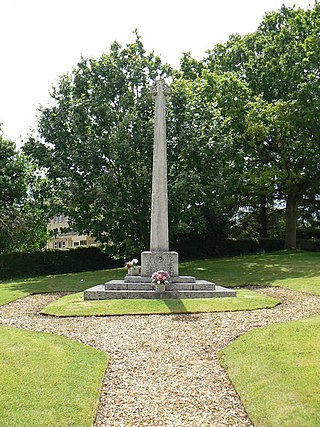
The East Knoyle War Memorial is a monument that commemorates the lives of soldiers from East Knoyle, Wiltshire, England, who were killed in war. Unveiled on 26 September 1920, it was originally intended to commemorate the 20 soldiers from the parish who died during the First World War. Subsequent inscriptions were added to recognise twelve who were killed in the Second World War, and a soldier killed by friendly fire in the Iraq War. In 2016 the memorial was designated a Grade II listed building.
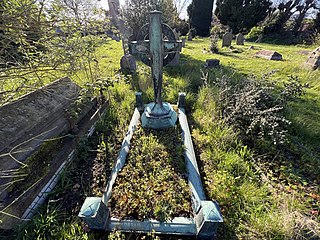
The Duffield Memorial is a gravesite monument located in the churchyard of the Church of St Mary in Great Baddow, Essex, England. Designed by Herbert Maryon and installed in 1912, it originally commemorated Marianne Duffield and William Ward Duffield, who died in 1910 and 1912, respectively. A second plaque was added to commemorate their son, William Bartleet Duffield, who died in 1918. In 2022, Historic England designated the work a Grade II listed building, noting it as an unusual example of both Art Nouveau metalwork and churchyard memorial.
Statue of Industry was a 1929 sculpture by the English artist Herbert Maryon.

















